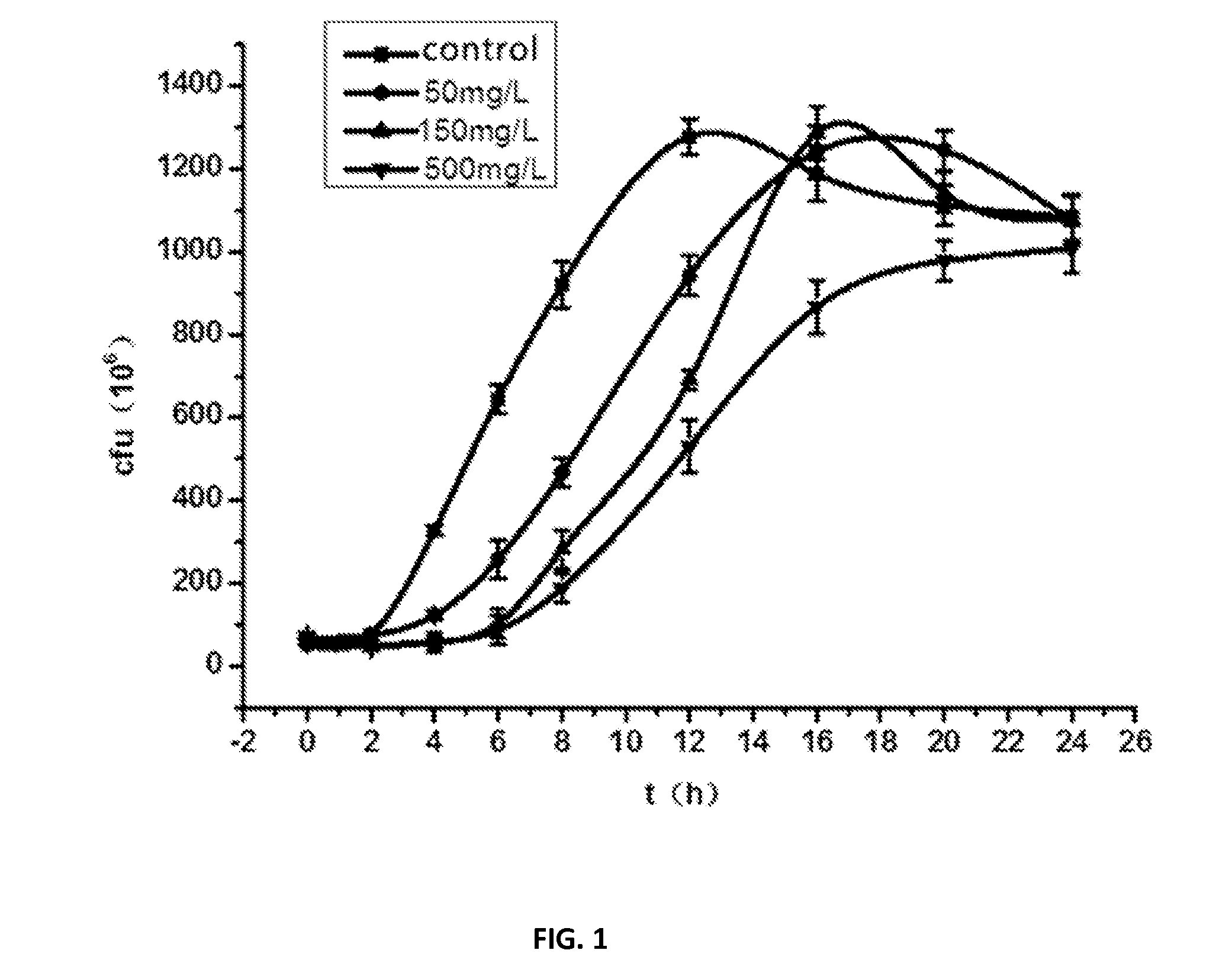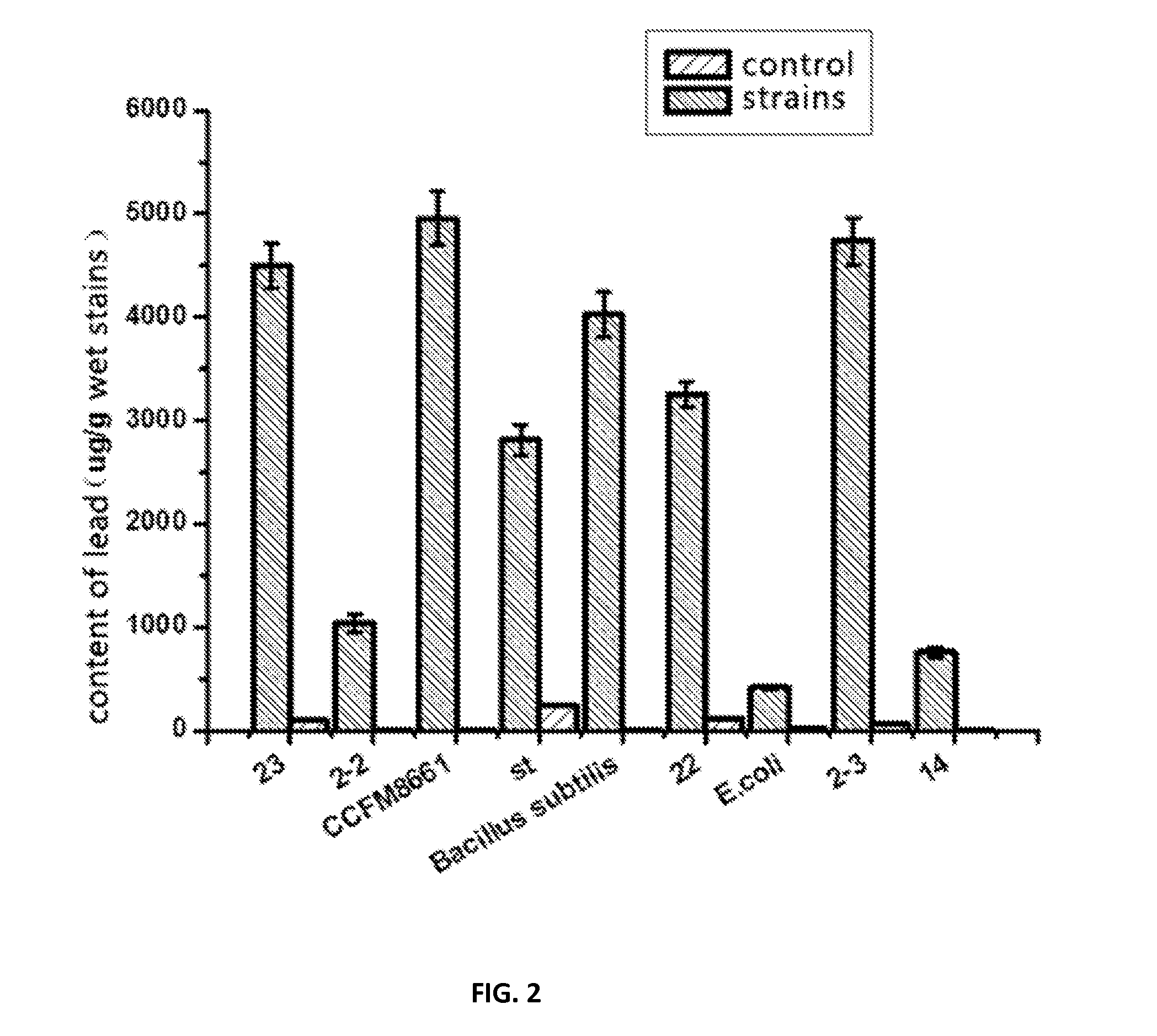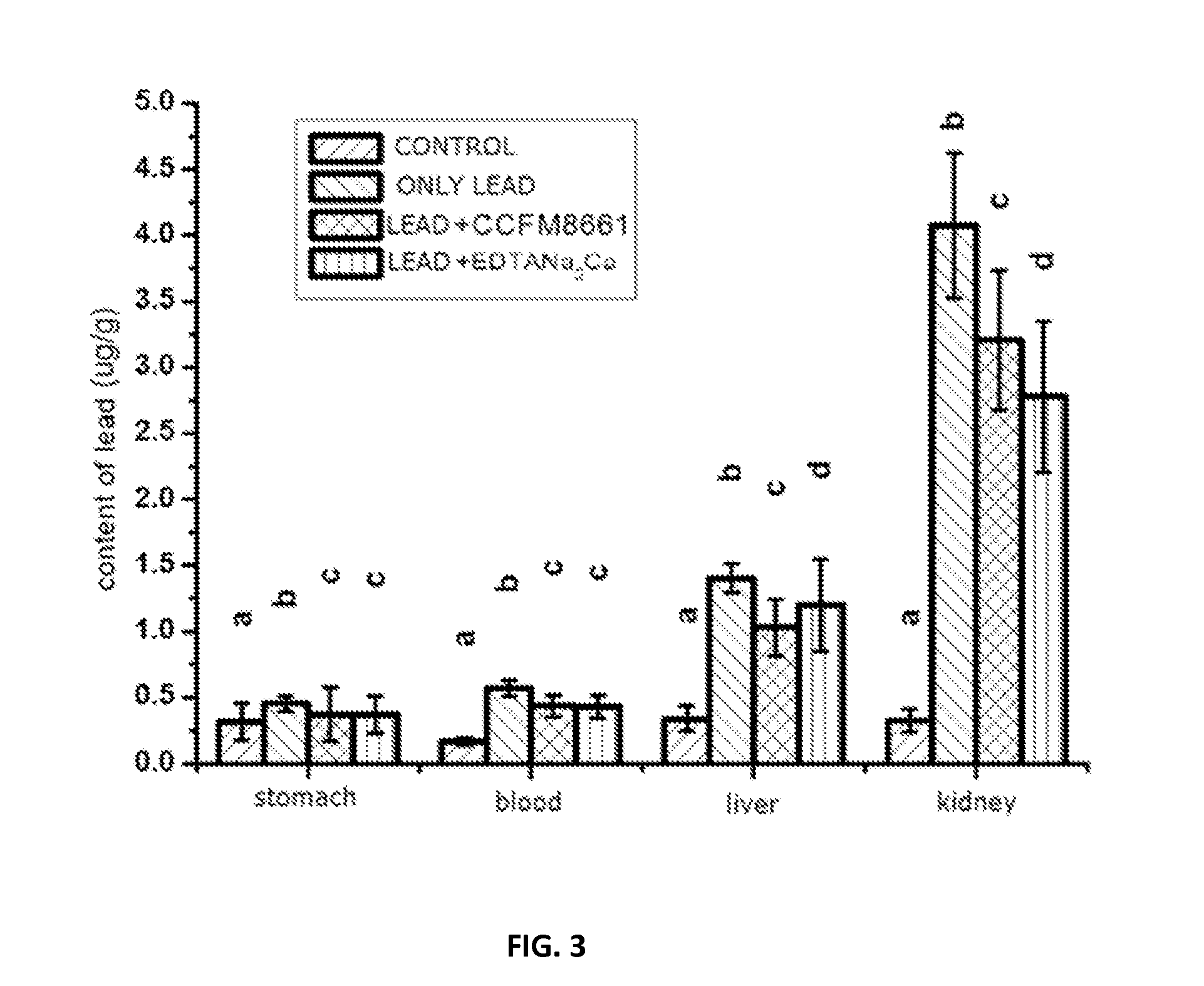protective effects and application of a Lactobacillus plantarum on the alleviation of lead toxicity
a technology of lactobacillus plantarum and lead toxicity, applied in the field of microorganisms, can solve the problems of toxic metal element harmful to a plurality of organs, heavy metal extremely harmful to human health, accumulation in the body,
- Summary
- Abstract
- Description
- Claims
- Application Information
AI Technical Summary
Benefits of technology
Problems solved by technology
Method used
Image
Examples
specific embodiments
Example 1
Experiment of Determining the Tolerance of Lactobacillus plantarum CCFM8661 to Lead Ions
[0117]Lead chloride of 0.20 g is added to 1 L of sterile water under aseptic conditions to obtain the aqueous solution of 150 mg / L lead ions. The components of MRS medium are dissolved in the solution to obtain the MRS medium containing 150 mg / L lead ions. Common MRS medium contains tryptone, yeast extract, glucose, sodium acetate, diammonium citrate, Tween-80, magnesium sulfate, manganese sulfate with the pH value of 6.2-6.4.
[0118]In the same manner as the previously described, MRS mediums containing 50 mg / L and 500 mg / L lead ions are prepared respectively. Cultures of Lactobacillus plantarum CCFM8661 at stable phase is inoculated 1:50(v / v) into MRS medium containing lead ions and were cultured at 37° C. Plate colonies was counted was after Oh, 2 h, 4 h, 6 h, 8 h, 12 h, 16 h, 20 h, and 24 h of culture to obtain the growth curve of Lactobacillus plantarum CCFM8661 as shown in FIG. 1. In ...
example 2
Lead Binding Experiment of Lactobacillus plantarum CCFM8661
[0120]Seven lactobacilli strains are screened out from Chinese traditional foods such as pickle and fermented milk wine according to the acid tolerance screening criteria (strains can grow under the pH3.0 condition). The seven lactobacilli strains, together with one E. coli stain and one Bacillus subtilis as control strains are purified and activated using MRS medium for lactobacilli, and LB medium for E. coli and Bacillus subtilis. The said LB medium is well known to the technicians in the microbial field, which contains tryptone, yeast extract, NaCl, and agar with the pH value of 7.0. These activated bacterial solutions are vibrated uniformly and centrifuged at the speed of 6000 r / min for 15 min. The bacterial pellets of these strains are transferred to the container containing 150 mg / L lead ion solution, while the bacterial pellets of control group are transferred into deionized water to give a final cell concentration of...
example 3
Tolerance dose experiment of mice fed with Lactobacillus plantarum CCFM8661
[0122]The frozen dry powder of Lactobacillus plantarum CCFM8661 is re-suspended in skim milk powder to obtain the suspension of 2.0×109 cfu / mL. 10 healthy Kunming male mice of 20 g are intragastrically administrated once a day. The death and weight statuses are observed for one week. These test results are shown in Table 1.
TABLE 1Weight changes of mice fed with Lactobacillus plantarum CCFM8661 of2.0 × 109 cfu / mLTime (day)1234567Weight (g)21.2 ± 1.521.9 ± 2.122.5 ± 2.223.5 ± 2.124.2 ± 1.924.9 ± 1.925.7 ± 1.8Death———————“—” means no death happened during the experimental period
[0123]The results in Table 1 show that 2.0×109 cfu / mL Lactobacillus plantarum CCFM8661 does not significantly affect these mice. They gain weight significantly without death and they have no significant pathological symptoms.
PUM
 Login to View More
Login to View More Abstract
Description
Claims
Application Information
 Login to View More
Login to View More - R&D
- Intellectual Property
- Life Sciences
- Materials
- Tech Scout
- Unparalleled Data Quality
- Higher Quality Content
- 60% Fewer Hallucinations
Browse by: Latest US Patents, China's latest patents, Technical Efficacy Thesaurus, Application Domain, Technology Topic, Popular Technical Reports.
© 2025 PatSnap. All rights reserved.Legal|Privacy policy|Modern Slavery Act Transparency Statement|Sitemap|About US| Contact US: help@patsnap.com



